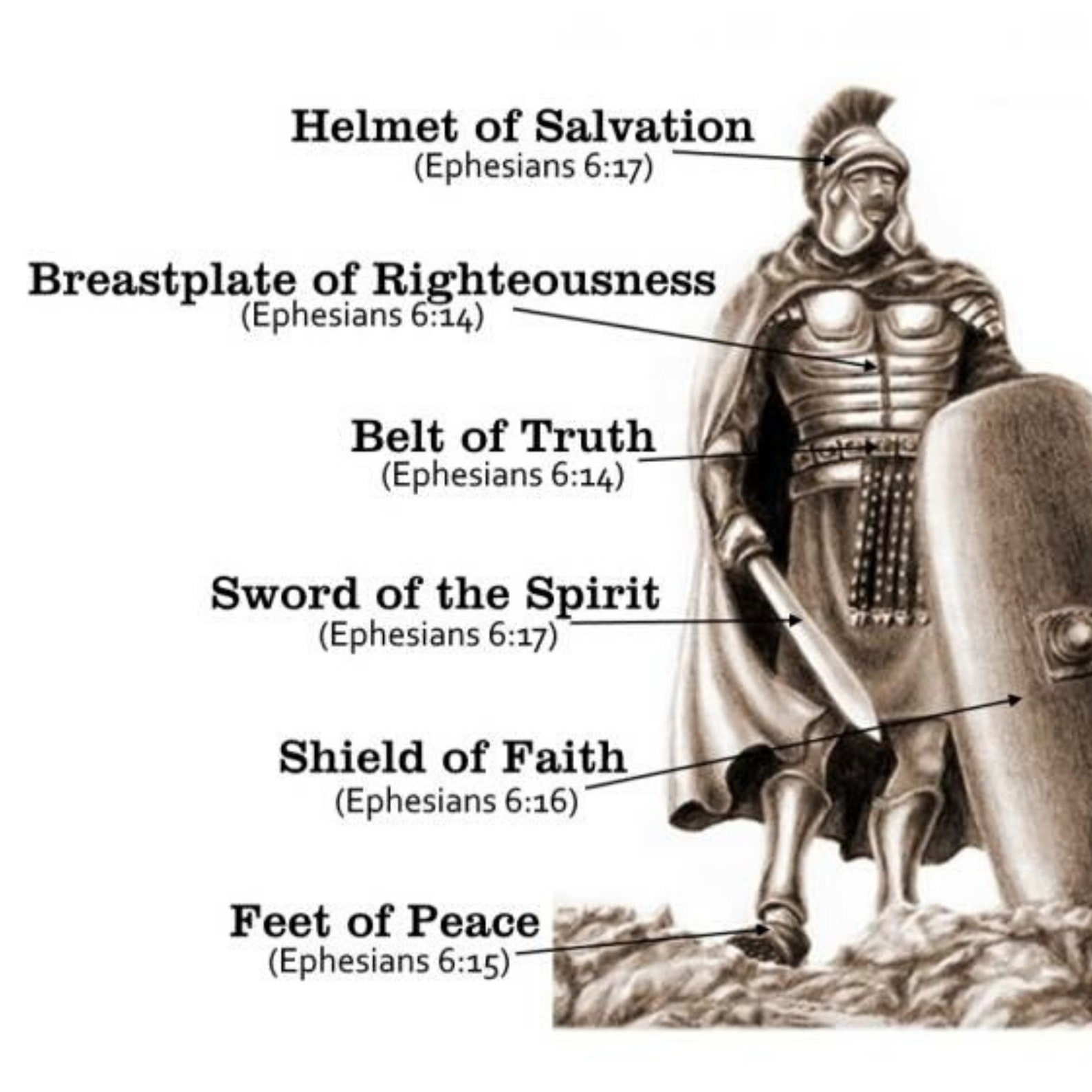

Resist the devil, and he will flee from you.

Now, what's interesting about this word is that it is the same word used in two other key verses that talk about how we are to respond to the attacks of the devil. Well, Paul wants his readers to “take up the whole armor of God”, so that they can “withstand”, or we could also say, resist “in the evil day”. So what's the difference between these two words? Just like this English translation, the Greek words that Paul used also share the same root word, “stand”. Notice there is one goal, one purpose for taking up the armor of God, BUT, that purpose is expressed in two ways: Paul talks about “withstanding” AND “standing”. Therefore take up the whole armor of God, that you may be able to withstand in the evil day, and having done all, to stand firm. Paul's writes, because we are engaged in a spiritual conflict with spiritual forces of evil. I believe verse 13 reminds us of the PURPOSE of this “armor of God”, while in verses 14 and 15, Paul begins to describe the PARTS of this armor.

So as we dig into these verses, I think the first thing we can do is separate verse 13 from verses 14 and 15. Let's continue our study this morning by looking together at verses 13-15 of Ephesians 6. And this is precisely why Paul teaches his readers, as well as us today, about what he calls “the armor of God”. And who is leading this army of darkness? These forces are carrying out, verses 11, “the schemes of the devil”.īut like the Mongol hordes, on our own, we are simply not equipped to fight the kind of battle that Paul describes here. As God showed us through Paul, this battle is a spiritual battle in which you and I are under attack from, verse 12.the rulers, against the authorities, against the cosmic powers over this present darkness, against the spiritual forces of evil in the heavenly places. (you get the idea)? The Mongol hordes would simply not be equipped to fight that kind of battle.ĭid you know you're in the same predicament? Last time, we look together at Ephesians 6 and learned about the unseen battle that is raging all around us, every single day. But how long do you think his forces would last against howitzers, machine guns, grenades, tanks, cruise missiles, attack helicopters, bombers, etc. Okay, now if this show were a real show, how long do you think that episode would last? Sure Genghis Khan had about 300,000 men, and horses, and shields, and swords, and bows and arrows.

So grab your popcorn and get ready for a battle of the ages! In the other corner, we have…all of the military forces of the United States that took part in Operation Desert Storm, which was carried out in January and February of 1991. In one corner we have the armies of Genghis Khan, who ruled the great Mongol Empire from 1206 AD to 1227 AD an empire which became the largest contiguous empire in the history of the world. On tonight's episode we have an epic showdown that is sure to be a “crowd-pleaser”. Welcome to “Great 'What If' Battles of History”, the show that takes different armies from different periods of history and pits them against one another in our virtual battlefield to find out who were the greatest warriors of all time!


 0 kommentar(er)
0 kommentar(er)
